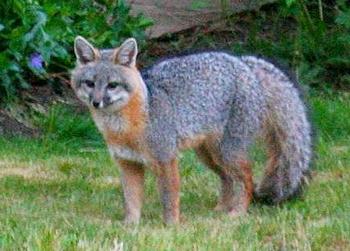
SACRAMENTO, California, September 5, 2019 (ENS) – In a victory for wildlife, California has become the first U.S. state to outlaw fur trapping. The Wildlife Protection Act of 2019 was signed into law by Governor Gavin Newsom Wednesday. It prohibits trapping native animals such as bobcats, gray foxes, coyotes, beavers, badgers and mink, on both private and public lands.
Backed by nonprofits Center for Biological Diversity and Social Compassion in Legislation, this law forbids selling the pelts of these animals, which are prized in Hong Kong, Paris, and other cities where expensive fur garments are sold, and eliminates fur dealer and fur agent licenses.

“The overwhelming majority of Californians value our wildlife alive, not trapped and cruelly slaughtered for foreign fur markets,” said Brendan Cummings, conservation director with the Center for Biological Diversity. “We thank Governor Newsom for relegating this cruel and antiquated practice to the dustbin of history in California.”
The law states that historically, fur trapping has played a major role in the extirpation of wolves and wolverines and the severe declines in sea otters, fishers, marten, beaver, and other fur-bearing species in California. Because individual trappers concentrate their operations in limited geographical areas, they can locally deplete populations of the species they target, impairing the ecological functioning of the area and diminishing opportunities for wildlife watching in these areas.
“It seems especially cruel, obviously, and it’s just unnecessary and costly,” said California Assemblywoman Lorena Gonzalez, the San Diego Democrat who introduced the bill. She said that the approximately 70 trappers who continue to work in the state, compared to thousands a century ago, cannot afford the cost of regulating the industry.
California Department of Fish and Wildlife data indicates 68 trappers killed 1,568 animals throughout the state in 2017, including coyotes, badgers, minks, gray foxes and beavers. To avoid damaging the furs, these animals were strangled, shot or beaten to death.
Despite the decline in trapping in the state, outrage at the practice has been widespread since 2013, when conservationist Tom O’Key came upon a bobcat trap illegally set on his land, according to the “Los Angeles Times.”
“I could not have guessed in a million years that trap would spark an unstoppable movement capable of shifting legislative thinking toward wildlife,” O’Key told the Times.
The bill banning fur trapping, AB 273, by Gonzalez, was passed by the California State Assembly on April 25 and by the State Senate on August 12.

“This unnecessary commercial activity is both cruel and insolvent,” Gonzalez said. “California’s fur trapping program has long faced a funding shortfall. Taxpayers shouldn’t be subsidizing the destruction of our wildlife.”
Trapping for fur was a large industry in California, but the harmful effects of trapping on the wildlife population can be traced to the early 1800s when sea otter populations along the San Francisco Bay and North Coast were decimated.
Fur trapping has also played a role in the decline of wolves, wolverines, fishers, martens and beavers in California.
Fur trapping in California is currently done on a small scale, yet hundreds of badgers, coyotes, foxes, and other fur-bearing animals are trapped each year so their pelts can be sold for a profit overseas.
In 2017, a total of 133 trapping licenses were sold to fur trappers in California, generating roughly $15,000 to the Department of Fish and Wildlife.
Despite requirements in state law for the trapping program to cover its own costs, trapping license fees do not cover the actual cost of implementing the state’s fur trapping program. In 2015, the California Fish and Game Commission voted to make California the first state to ban the commercial trapping of bobcats and it noted the program’s funding shortfall as a key role in the decision.
California hunters are also forbidden to trap river otters and red foxes in California.
While the Wildlife Protection Act of 2019 bans trapping for fur, prohibits the sale of raw fur, and eliminates the licenses for fur dealers and fur agents, the law maintains their ability to trap in order to manage wildlife that may be injuring crops or property.
Judie Mancuso, founder and president of Social Compassion in Legislation, told the “Los Angeles Times,” “The signing of this bill into law is the result of compelling data and a change of heart in public opinion regarding animal cruelty.”
Copyright Environment News Service (ENS) 2019. All rights reserved.
© 2019, Environment News Service. All rights reserved. Content may be quoted only with proper attribution and a direct link to the original article. Full reproduction is prohibited.
